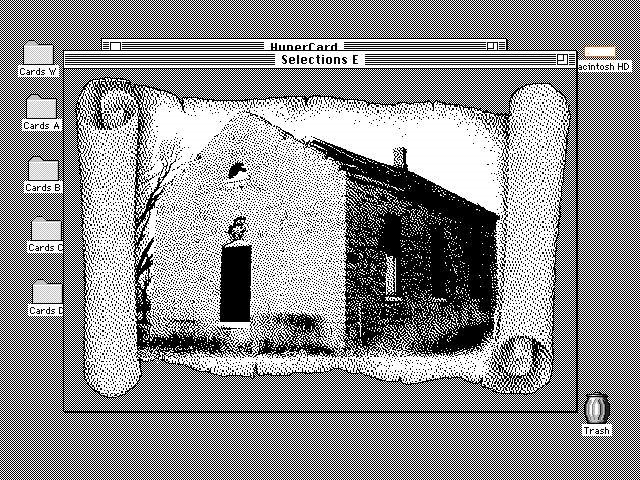Stull
The answers to the next few riddles go well, when you remember Roger's considered judgement about Kansas being 'the high point of nothing'. When you get to look under the hood at how he implemented the code to interpret your entries, you can see that he cunningly does not dump you out of the game right away after you start to go wrong - he accepts any entry for two or three characters after you go wrong, and then dumps you out, so you can not get a good feel for guessing the answer.
I was stuck here a while - but I did not have my good advice then.
We then get to the set-up, where Roger starts to talk about the abandoned church (pictured) and graveyard in a little town called Stull, midway between Topeka and Kansas City - and not too far from where Roger grew up. The University of Kansas paper had a whimsical article in November 1974, which gave real impetus to the Stull legend (I can not find an actual copy of this article on-line, although a partial quote from it is embedded in the Wikipedia article.)
Supposedly, Stull cemetery hosts one of the "seven gateways to Hell", and the Stull gateway opens on Halloween and the Spring equinox. This story has had a merry life in current culture - the CW series "Supernatural" had their fifth season finale supposedly centered on Stull, and the History Channel did a show in one of their "creep-out" series about Stull. The legend took off, and really took hold.
Roger embellishes his narrative by describing spring equinox daybreak as the time to be in the center of the church. And to make a wish, right then.
In thirty years, the choice has been taken out of your hands - the church has been bulldozed. The locals got really tired of all the activity at their poor little cemetery, and the college kids took a questionable idea and made it into a terrible idea by knocking memorials over, and even stealing one of them for their dorm room - the usual idiocy.
From pictures on the web, looks like the church rubble is on the horizon, near the center of the north boundary of the cemetery. A "raintree" Roger mentions looks like it is near there.
I do not recommend this as an adventure to be pursued - and Roger's instructions indicate that he did not leave anything there to be discovered. It may have been a plausible thing to do in the mid-eighties, it just got overtaken by events.
And Roger's instructions DO say, "IF the church still stands ..."
And the 1897 date? That turns out to be from a plaque at Mount Sunflower: "On this site in 1897, nothing happened."





Comments
Post a Comment